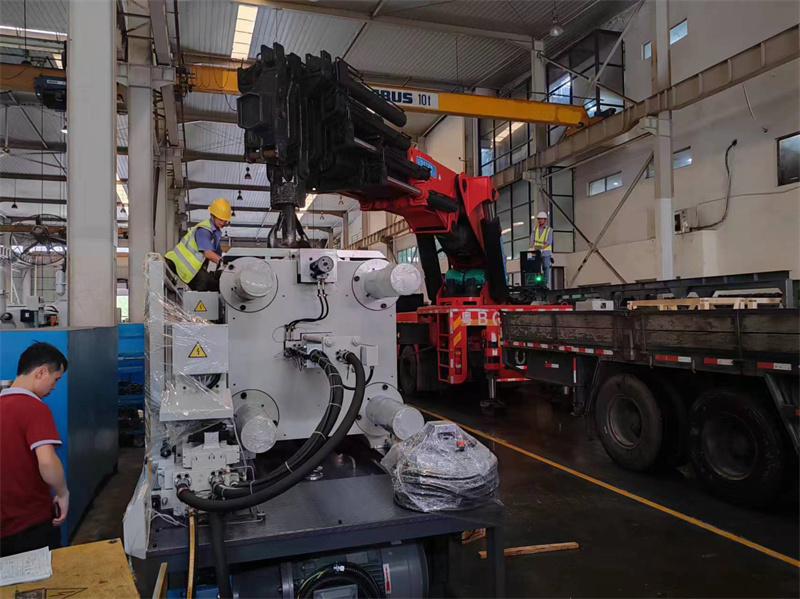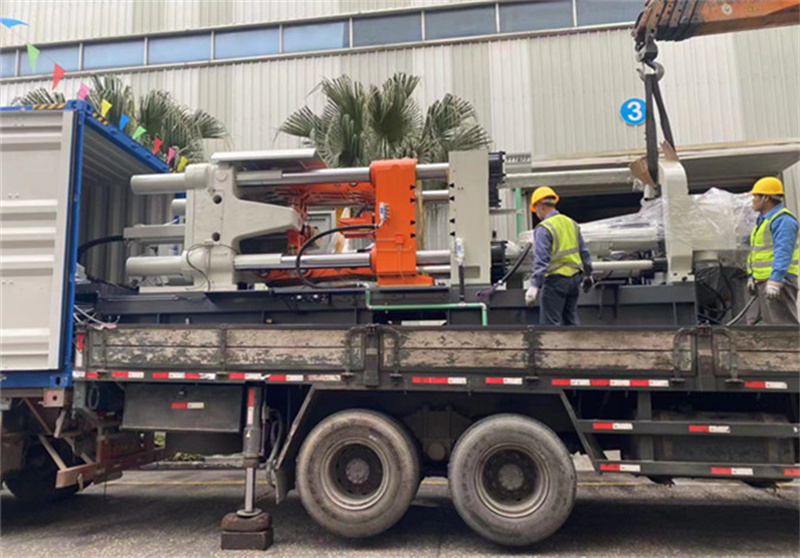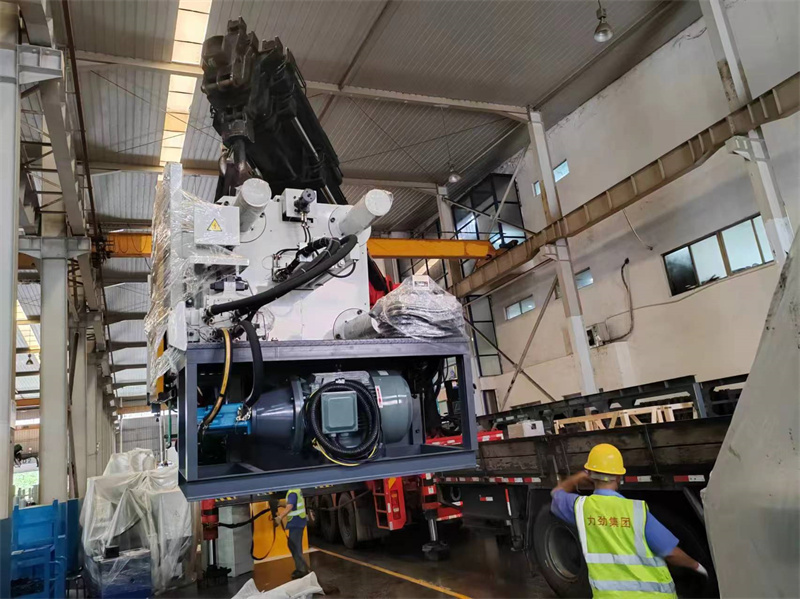Drag Marks
LK Die Casting Machine / 2024-09-25 16:13:30
2024-09-25 by Cherry
Introduction
In modern manufacturing, die-casting machines are widely
used in automobiles, electronics, aviation, and other fields
as an efficient metal forming equipment. And drag mark
technology is one of the key factors to improve die-casting
machines' performance and product quality.

This article will explore the application of drag marks in
die casting machines in depth to help readers understand
its principles and practical value.
What is a drag mark?
Drag marks, as the name suggests, are uneven marks on the
metal surface formed during the die-casting process. This
phenomenon is usually caused by factors such as mold design,
material flow, and uneven cooling. Although in some cases,
drag marks are regarded as defects, proper application of
drag marks can improve the performance of die castings.
Causes of drag marks
1. Die-casting process parameters
1.1 Die casting speed: When the die casting speed is too fast,
the impact force of the molten metal on the mold increases,
and drag marks are prone to occur.
1.2 Pouring temperature: Too high or too low pouring temperature
will affect the fluidity of the molten metal, resulting in
the appearance of drag marks.
1.3 Mold temperature: Uneven or inappropriate mold temperature
will also change the flow state of the molten metal in the
mold, resulting in drag marks.
2. Mold design and manufacturing
The geometry and surface treatment of the mold has an important
influence on the formation of drag marks. Unreasonable mold
design may lead to uneven metal flow, resulting in obvious
drag marks.
2.1 Mold structure: Complex mold structure may lead to poor
flow of molten metal, resulting in drag marks.
2.2 Mold surface quality: Factors such as the roughness and
hardness of the mold surface will affect the friction between
the molten metal and mold affect the formation of drag
marks.
2.3 Gate design: The gate's position, size, and shape
have an important influence on the flow direction and speed
of the molten metal. Unreasonable gate design is prone to
drag marks.
3. Cooling rate
During the die-casting process, the cooling rate of the metal
will directly affect its solidification state. If the cooling
rate is uneven, it may cause drag marks in local areas.
4. Material properties
The fluidity and solidification characteristics of different
metal materials will also affect the appearance of drag
marks. For example, aluminum alloys are more prone to drag
marks than zinc alloys because of their greater fluidity.
Positive Applications of Drag Marks

Although drag marks are often considered defects, their
presence can bring positive effects in some cases:
1. Enhance Adhesion
Appropriate drag marks can increase the adhesion of coatings
or other surface treatments, and improve the wear resistance
and corrosion resistance of products.
2. Improve Appearance
In some designs, drag marks can be designed as aesthetic elements
to make the product more visually attractive. For example,
the surface treatment of some high-end home appliances deliberately
retains slight drag marks to highlight their handmade characteristics.
3. Reduce Production Costs
By making reasonable use of drag marks, the requirements for
mold surface finishing can be reduced during the design
stage, thereby reducing production costs.
How to Control Drag Marks
To effectively control the generation of drag marks
during the die-casting process, the following methods can be
adopted:
1. Optimize mold design
When designing the mold, the metal fluidity should be fully
considered to ensure that the internal structure of the mold
is reasonable and avoids the formation of dead corners and
stagnation areas.
2. Adjust the cooling system
Reasonable configuration of the cooling system to ensure uniform
cooling of the mold can effectively reduce the generation of
drag marks. Check the cooling pipes regularly to ensure that
there is no blockage.
3. Choose the right material
When selecting materials, metal materials with moderate
fluidity and solidification properties should be selected
according to product requirements to avoid drag marks caused
by material characteristics.

Application of drag marks in die-casting machines
1. Quality control
1.1 As one of the important indicators of casting quality,
the presence and severity of drag marks can reflect the
stability of the die-casting process and the quality of the
mold.
Through the observation and analysis of drag marks,
problems in the die-casting process can be discovered in
time, such as too-fast die-casting speed, inappropriate pouring
temperature, mold wear, etc., to take corresponding
measures to adjust and improve the quality of castings.
1.2 For some castings with high surface quality requirements,
the control of drag marks is particularly important. By
optimizing the die-casting process parameters and mold design,
the occurrence of drag marks can be effectively reduced, and the
surface finish of castings can be improved, and customer needs
can be met.
2. Mold maintenance and improvement
2.1 The appearance of drag marks can provide an important basis
for mold maintenance and improvement.
By analyzing the location, shape, and severity of the drag mark,
it can be determined which parts of the mold have problems
such as wear, deformation, or unreasonable design. In response
to these problems, the mold can be repaired, replaced or
improved in time to extend the service life of the mold and
improve production efficiency.
For example, if the drag mark mainly appears in a specific
part of the mold, it may be that the mold surface in that
part is severely worn and needs to be repaired or replaced.
If the shape of the drag mark is irregular, it may be that
the structural design of the mold is unreasonable and needs
to be optimized.
2.2 Process optimization
The study of drag marks can provide a reference for the
optimization of the die-casting process. By analyzing the
changes in the drag mark under different process parameters,
the best combination of die-casting process parameters can
be determined to improve the quality and production efficiency
of the casting.
For example, by adjusting parameters such as die-casting
speed, pouring temperature, and mold temperature, the changes
in the drag mark can be observed and the most suitable
process parameter range can be found. At the same time, the
flow state of the molten metal can be optimized and the
generation of drag marks can be reduced by measures such as
improving the gate design and adding an exhaust system.
Detection and evaluation of drag marks
The detection of drag marks usually relies on professional
testing equipment and technology. Common methods include:
1. Visual inspection
By visually observing the surface of the product, the presence
and the severity of the drag mark can be preliminarily determined.
2. 3D scanning
Using 3D scanning technology, the depth and distribution of
the drag mark can be accurately measured to provide data support
for subsequent quality control.
3. Surface roughness measurement
By measuring the surface roughness, the impact of the drag
mark on the surface quality of the product can be quantified.
Drag mark control method
1. Optimize die-casting process parameters
1.1 Reasonably adjust the die casting speed: Select the
appropriate die casting speed according to the shape, size
and complexity of the casting. For thin-walled castings
or castings with complex shapes, the die-casting speed should
be appropriately reduced to reduce the impact of the molten
metal on the mold.
1.2 Control the pouring temperature: Determine the appropriate
pouring temperature based on the characteristics of the metal
material and the requirements of the casting. Generally
speaking, the pouring temperature should be within a certain
range above the liquidus temperature of the metal material to
ensure the fluidity of the molten metal.
1.3 Stabilize the mold temperature: Keep the mold temperature
within a suitable range through heating, cooling, or insulation.
For large castings or castings with complex shapes, equipment
such as mold temperature controllers can be used to accurately
control the temperature of the mold.
2. Improve mold design and manufacturing
2.1 Optimize mold structure: Design a simple and reasonable
mold structure to avoid poor flow of molten metal in the
mold. For example, use reasonable parting surfaces, gates
and exhaust systems to reduce turbulence and eddy currents
of molten metal.
2.2 Improve mold surface quality: Perform surface treatment
on the mold, such as polishing, chrome plating, etc., to reduce
the roughness of the mold surface and reduce the friction
between the molten metal and the mold. At the same time, improve
the hardness and wear resistance of the mold and extend
the service life of the mold.
2.3 Reasonably design the gate: According to the shape and
size of the casting, select the appropriate gate position,
size and shape. The design of the gate should ensure that
the molten metal can flow smoothly into the mold to avoid
impact and turbulence.
3. Strengthen production management
3.1 Strictly control the quality of raw materials: Select
metal materials with stable quality and good fluidity
to avoid the generation of drag marks due to raw material
problems.
3.2 Regular maintenance and care of the die-casting machine:
Keep the die-casting machine in good operating condition
and ensure the stability of the die-casting process parameters.
At the same time, regularly clean and lubricate the die-casting
machine to reduce the impact of equipment failure on the
quality of castings.
3.3 Train operators: Improve the technical level and quality
awareness of operators and operate in strict accordance with
the operating procedures. Operators should be familiar with
the adjustment methods of die-casting process parameters and
the maintenance points of the mold, and promptly discover and
solve problems.
Case analysis of drag marks
Taking the die-casting process of a certain automotive
part as an example, in the early stage of production, due
to unreasonable mold design, obvious drag marks appeared,
resulting in product scrapping. After optimizing the design
and adjusting the cooling system, the generation of drag
marks were successfully reduced and the product qualification
rate was improved.
Conclusion
Although the application of drag marks in die-casting machines
is often regarded as a defect they can add value to
the product under certain conditions.
The application of drag marks in die-casting machines is a
complex and important issue. Through in-depth research and control
of drag marks, the quality and production efficiency of castings
can be effectively improved, the service life of molds can be
extended, and production costs can be reduced.
In actual production, we should take into account factors
such as die-casting process parameters, mold design and
manufacturing, and production management according to specific
circumstances, take effective measures to control the generation
of drag marks, and contribute to the development of the
die-casting industry.
Through reasonable design and control measures, manufacturers
can effectively manage the generation of drag marks, thereby
improving the overall quality and competitiveness of products.
I hope this article can provide readers with valuable references
and help the development of the manufacturing industry.
We are LK Die die-casting machine Authorized Official Agent
for Egypt(EGY),Saudi Arabia(KSA),United Arab Emirates(UAE)
The Islamic Republic of Iran(Iran),Qatar(QAT),
The State of Kuwait(Kuwait), The Middle East
Contact us to discuss the details of your project and we'll
be happy to provide you with a review and quote.
Learn more about our die-casting services through:
https://www.zazdiecasting.com/ and https://ae.zazdiecasting.com/
OTHER CONTENT
-

2024-09-19 14:16:15 LK Cold Chamber Die Casting Machine DCC900 Locking Force: 9000KN Die Height: 400-1000mm Space Between Tie Bars: 930x930mm Shot Weight: 13.5Kg Casting Area Max:2250c㎡
More -

2024-09-19 14:11:06 LK Cold Chamber Die Casting Machine DCC280 Locking Force: 2800KN Die Height: 250-650mm Space Between Tie Bars: 560x560mm Shot Weight: 2.9Kg Casting Area Max:700c㎡
More -

2024-09-19 10:23:07 LK Cold Chamber Die Casting Machine DCC580 Locking Force: 5000KN Die Heigh: 350-850mm Space Between Tie Bars: 760x760mm Shot Weight: 6.9Kg Casting Area Max:1250c㎡
More -

2024-09-19 10:11:20 LK Cold Chamber Die Casting Machine DCC400 Locking Force: 4000KN Die Height: 300-700mm Space Between Tie Bars: 669x669mm Shot Weight: 4.7Kg Casting Area Max:1000c㎡
More

